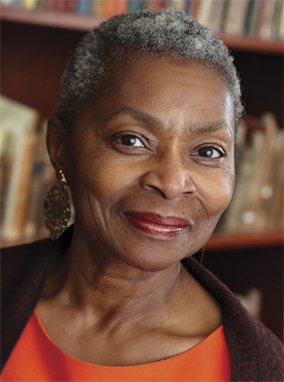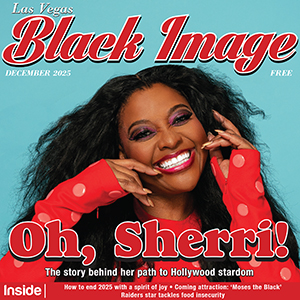HISTORIC BLACK VEGAS: Reflecting on Clinton Wright’s historic visual legacy
October 16, 2025 by agutting@reviewjournal.com
Filed under Community
BY CLAYTEE D. WHITE
On Sept. 12, the Carnegie Museum of Art in Pittsburgh unveiled a powerful and historic tribute — a stunning exhibition honoring 60 Black photojournalists from across the nation. Among those featured in this visually compelling space was our very own Clinton Wright, veteran photojournalist of The Voice Newspaper, whose images of Las Vegas’s Black community have captured decades of untold stories.
But Clinton Wright’s inclusion was more than symbolic — it was celebratory. Of the sixty photographers selected, only six were highlighted with live presentations, where someone was invited to speak about their work. I had the tremendous honor of presenting Clinton Wright’s legacy to the audience.
Let me take you there. The Carnegie Museum of Art — nestled near the University of Pittsburgh — is more than just a gallery. It’s part of a larger cultural epicenter that includes a natural history museum, a world-class library, and a vibrant art institution. The exhibit, curated by Dan Leers, artist David Hartt, and Pittsburgh historian Charlene Foggie-Barnett, covered nearly half a floor in scale — comparable to the vast Lied Library at UNLV.
Charlene Foggie-Barnett was instrumental in discovering Clinton Wright’s collection of over 8,000 photographs, archived in the Special Collections & Archives at UNLV. Thanks to ongoing digitization efforts — championed by UNLV’s Technical Services and Digitization Departments — these remarkable images are becoming publicly accessible, grant by grant. Sadly, funding from the state and donors is still too limited to cover essentials like digitization, which is key to preserving and teaching history.
Clinton Wright’s journey began in Altheimer, Arkansas, but his impact was made in Las Vegas. After graduating from the University of Arkansas at Pine Bluff — a proud Historically Black College — Wright moved west to join family members who had migrated in 1957. He worked at the Stardust Hotel by day, but it was photography that lit his path.
He was self-taught. He built his own darkroom. And through wedding photography, he became a quiet legend in the community. It was one wedding in particular — for the daughter of Jimmy Gay, the first Black professional at the Sands Hotel — that caught the attention of both Ebony Magazine and Dr. Charles I. West, the founder of The Voice Newspaper.
“He asked me if I could take the pictures, develop them, and have them ready for print on the same day,” Wright recalled in a 2005 oral history interview. “I could — because I had my own darkroom.”
That kind of hustle and commitment became a signature of Wright’s work. He didn’t just document events — he archived Black life in motion.
In 2005, following that oral history interview, Clinton Wright donated his archive to UNLV’s Special Collections & Archives. Since then, digitization teams have worked diligently to preserve his negatives and make his photos accessible to a global audience. His work has since earned local accolades, including honors from the NAACP, features in regional publications, and now, this national recognition from the Carnegie Museum of Art.
This exhibit, inspired by the prolific work of Charles “Teenie” Harris of the Pittsburgh Courier, didn’t just showcase Black excellence behind the camera. It showcased the everyday excellence within Black communities across America. From birthday parties to cotillions, cocktail lounges to church pews, graduations to grassroots organizing — the exhibit was a love letter to the lived experiences of Black people.
And Clinton Wright? His lens didn’t just capture Las Vegas history — it preserved our joy, our struggles, our brilliance.
As I stood in that gallery, surrounded by the life’s work of so many gifted Black photojournalists, I felt proud — not just of Clinton Wright, but of the generations he’s inspired by doing what he loved: telling our stories with truth, dignity, and light.






